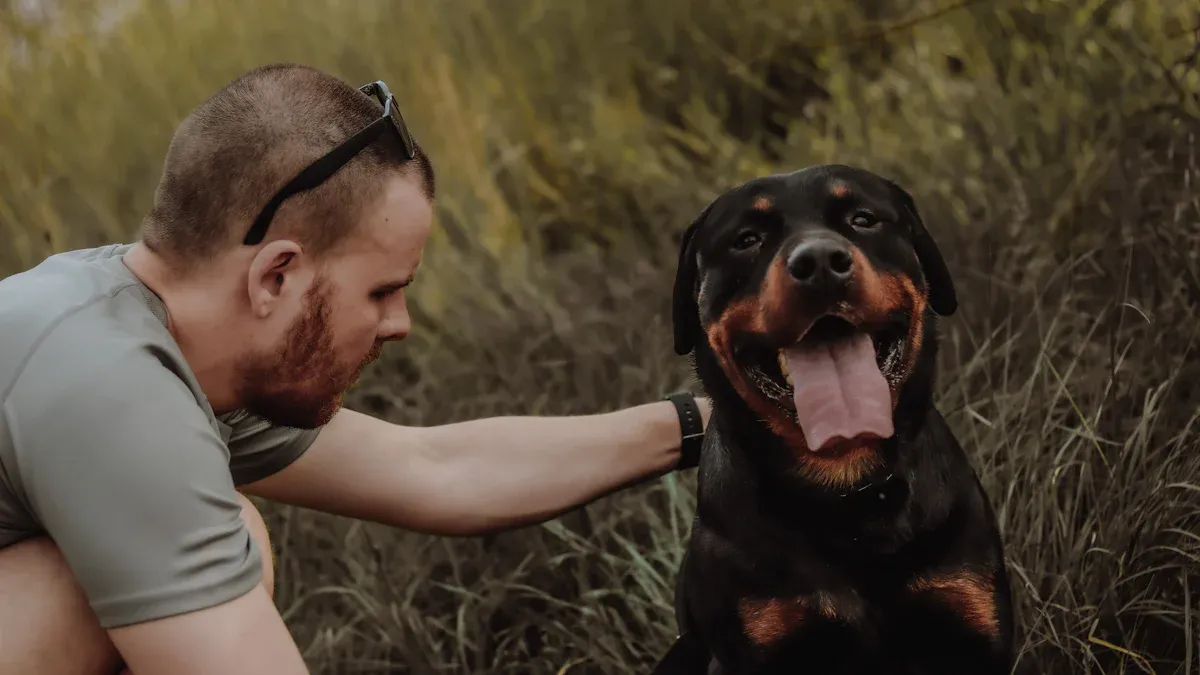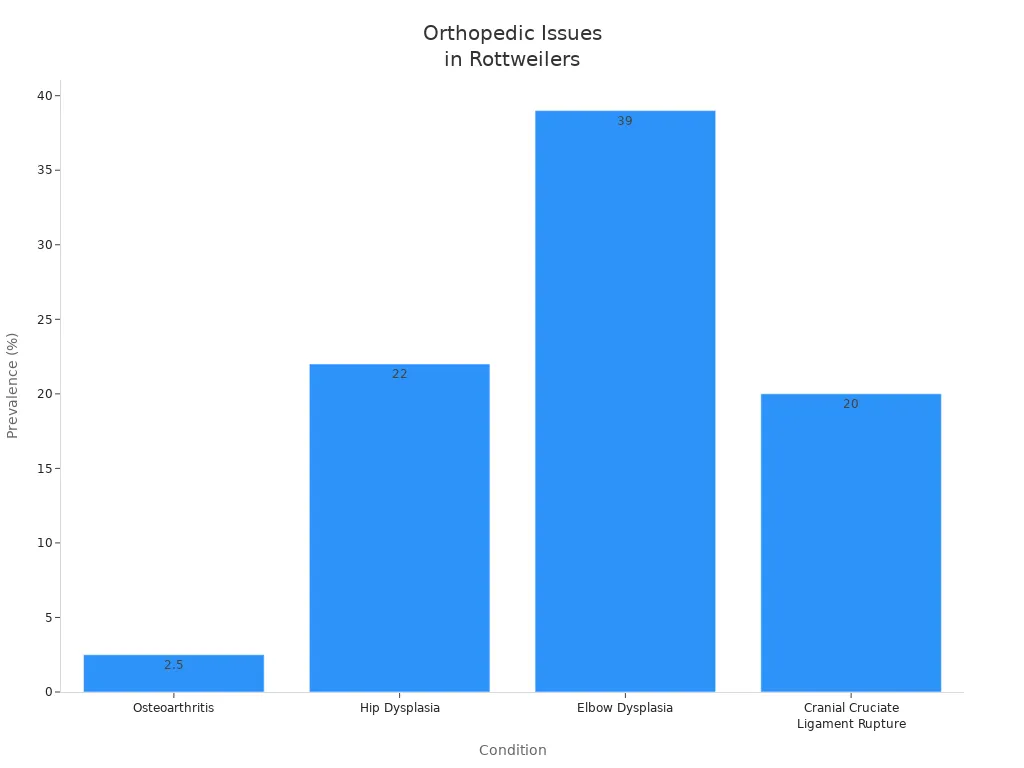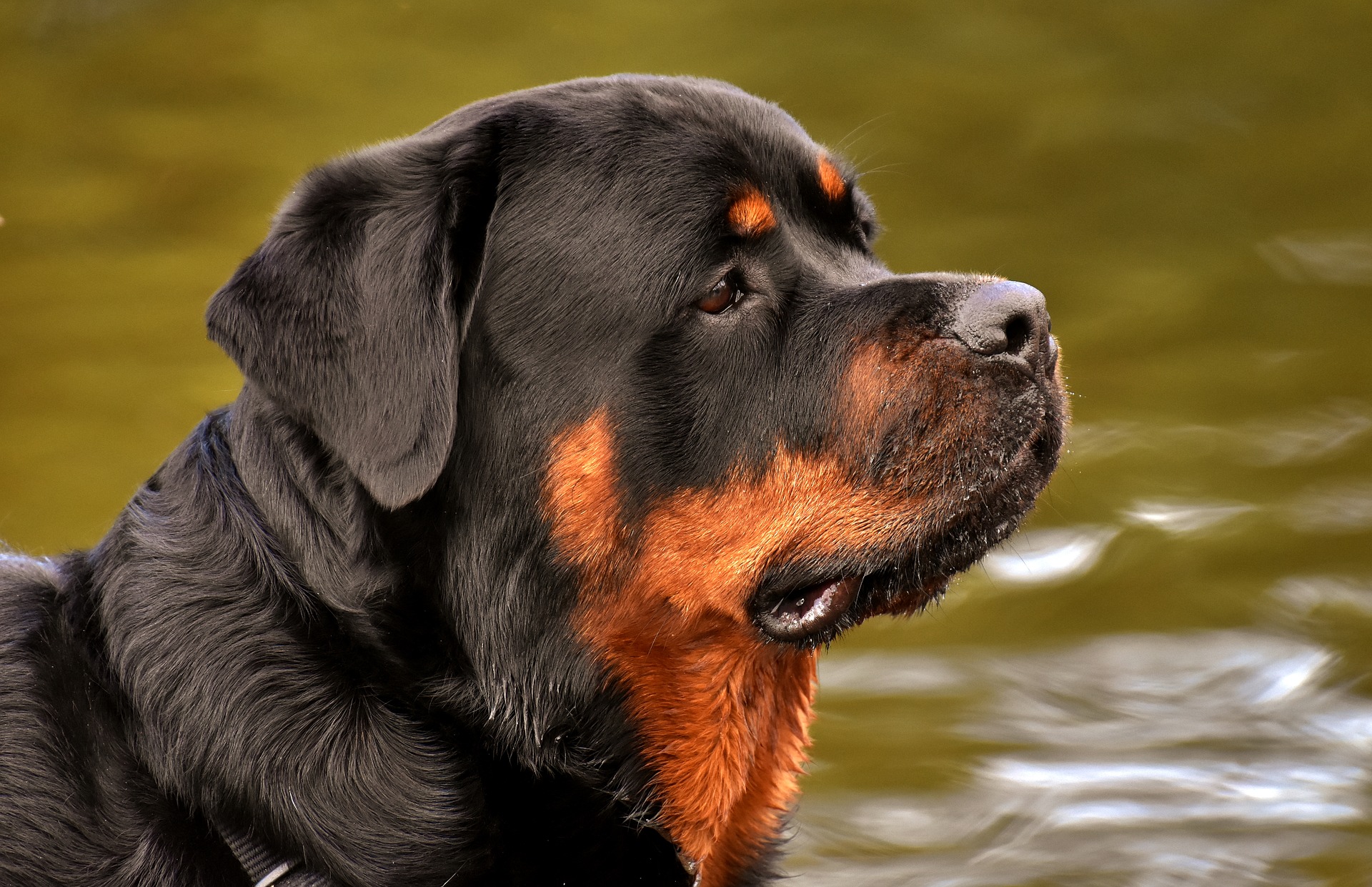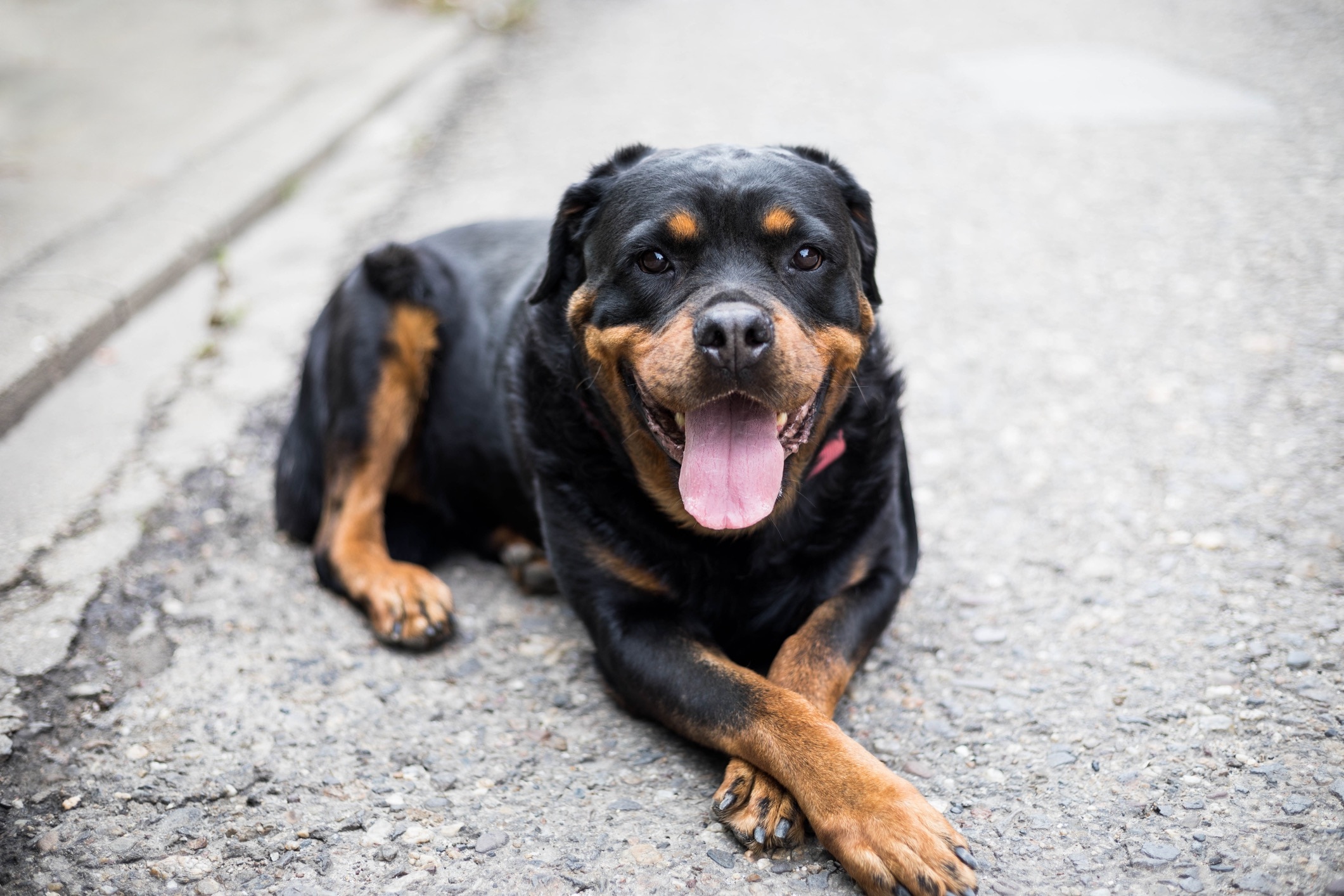Rottweilers—with their muscular builds, confident stance, and unwavering loyalty—are often celebrated as protective companions and working dogs. Bred originally to herd cattle and pull carts, they possess immense strength, stamina, and a natural desire to “have a job.” But beneath their tough exterior lies a breed with distinct weaknesses—physical and behavioral—that can impact their health, happiness, and quality of life if not addressed. These weaknesses aren’t flaws; they’re traits shaped by their size, genetics, and working heritage, and understanding them is key to providing the best care.
From joint strain to energy mismanagement and heat sensitivity, Rottweilers face unique challenges that require intentional solutions. While regular walks and play help, they often fall short of addressing their specific needs—especially when weather or time constraints limit outdoor activity. This is where non-electric dog running machines (dog-powered, self-paced treadmills) become a critical tool. Unlike electric models that force speed or generic outdoor exercise that risks overexertion, non-electric running machines let Rottweilers move at their own pace, providing low-impact, controlled activity that directly targets their weaknesses. Let’s break down the most significant Rottweiler weaknesses, why they matter, and how a non-electric dog running machine can help you support your Rottweiler’s long-term well-being.
The Key Weaknesses of Rottweilers (Physical and Behavioral)

Rottweilers’ weaknesses are closely tied to their biology and history—their large size, muscular frame, and working drive create specific vulnerabilities. Here are the most impactful ones:
High Risk of Joint and Orthopedic Issues
One big worry for Rottweilers is their risk of joint and bone problems. These issues can hurt their quality of life. Here’s a quick look at some common conditions:
|
Condition |
Prevalence (%) |
Notes |
|---|---|---|
|
Osteoarthritis |
2.5 |
Rottweilers are the most likely breed to get this. |
|
Hip Dysplasia |
22 |
A major bone problem common in Rottweilers. |
|
Elbow Dysplasia |
39 |
Another big bone issue in Rottweilers. |
|
Cranial Cruciate Ligament Rupture |
20 (approx.) |
Rottweilers are 3 to 7 times more likely to have this than other dogs. |

These problems can cause pain and trouble moving. It’s important to watch your Rottweiler's activity and weight. Regular vet visits can help find these issues early.
Difficulty Managing Excess Energy (Leading to Behavioral Problems)
Why it’s a weakness: Rottweilers are high-energy working dogs that need consistent, purposeful activity to stay balanced. Their heritage as herders and cart-pullers means they crave mental and physical stimulation—far more than a casual walk can provide. When energy is unmanaged, it manifests as destructive behavior (chewing, digging), excessive barking, or even aggression (rooted in frustration, not malice).
Impact: Unchecked energy strains your bond with your Rottweiler and can make them difficult to handle. It also increases the risk of accidental injury—an overexcited Rottweiler may jump on people, pull on the leash, or collide with objects, worsening joint strain.
Heat Sensitivity (Prone to Heat Exhaustion)
Why it’s a weakness: Rottweilers have a short, dense double coat that traps heat, and their large size makes it harder for them to cool down efficiently. They lack the ability to pant effectively enough to regulate body temperature in hot weather (temperatures above 80°F/27°C are risky). Unlike smaller breeds that can seek shade and cool off quickly, Rottweilers overheat rapidly—even during moderate activity.
Impact: Heat exhaustion can progress to heatstroke in minutes, a life-threatening condition that causes organ damage, seizures, and even death. It also limits their ability to get necessary exercise during warm months, worsening energy buildup and joint issues.
Tendency Toward Obesity (Exacerbates All Other Weaknesses)
Obesity is another big worry for Rottweilers. Studies show many Rottweilers are overweight. This extra weight puts stress on their joints and organs, making other health issues worse. Here are some key points to think about:
-
Being overweight raises the risk of joint problems.
-
Obesity can cause health issues like diabetes and heart disease.
-
You should watch mealtimes and portion sizes closely.
Talking to a vet can help you find the best diet and daily food amount for your Rottweiler.
Behavioral Sensitivity to Boredom and Lack of Purpose
Why it’s a weakness: Rottweilers thrive on having a “job”—whether it’s obedience training, cart-pulling, or simply helping with daily tasks. Without mental stimulation and a sense of purpose, they become bored, anxious, and even depressed. This isn’t just a “behavioral quirk”; it’s a core need rooted in their working heritage.
Impact: Boredom amplifies other weaknesses—anxious Rottweilers may overeat (leading to obesity) or avoid movement (worsening joint issues). It also makes them less responsive to training, as their minds are focused on unmet needs rather than commands.
To fix this, think about using puzzle toys or training games in your routine. Keeping their minds busy is just as important as physical exercise.
Why Traditional Solutions Fail to Address Rottweiler Weaknesses

Many Rottweiler owners try to mitigate these weaknesses with common care tactics, but they often miss the mark—because they don’t account for the breed’s unique needs:
“Long Walks” Worsen Joint Strain (Not Relieve It)
You may think long walks are a good way to exercise your Rottweiler. But these long trips can actually make joint strain worse. Rottweilers often have joint problems like hip and elbow dysplasia. Instead of helping, long walks can add more pressure on their weak joints.
Try shorter, more frequent low-impact activities instead of long walks. This way, you can keep your Rottweiler active without hurting their joints.
Outdoor Play in Heat Is Dangerous (and Unreliable)
Playing outside is fun, but it can also be dangerous, especially when it’s hot. Did you know that a dog's normal body temperature is higher than yours? When it gets to 106°F, they can quickly get heatstroke. Here are some tips to remember:
-
If it’s over 70°F, limit outdoor play.
-
At 80–90°F, only take short walks.
-
Above 90°F, keep outdoor time very short—just for bathroom breaks.
To keep your Rottweiler safe, pay attention to the weather. Instead of playing outside on hot days, think about indoor activities that keep them cool and busy.
Generic Diet Plans Don’t Prevent Obesity
Many dog owners use generic diet plans to help their Rottweiler lose weight. Sadly, these one-size-fits-all plans often do not work. Rottweilers have special dietary needs because of their size and health risks. They can have problems like gastric dilatation-volvulus (bloat) and food sensitivities.
To help your Rottweiler stay at a healthy weight, talk to your vet for a custom diet plan. This way, you can make sure they get the right nutrients without extra calories.
Crating or “Calming” Toys Don’t Solve Boredom
You might think crating your Rottweiler or giving them calming toys will keep them happy. But these solutions often do not meet their need for mental challenges. Rottweilers need challenges and a sense of purpose. Without enough to do, they can get bored and act out.
Instead of just using crating or toys, add interactive games and training sessions to their routine. This will keep them busy and help you bond with them.
By knowing why traditional solutions often do not work, you can find better ways to help your Rottweiler's weaknesses. Remember, a little extra effort can make your dog happier and healthier!
How Non-Electric Dog Running Machines Help Rottweilers

Non-electric dog running machines are uniquely designed to address Rottweilers’ weaknesses. They’re dog-powered (self-paced), low-impact, and adaptable—providing activity that’s safe, controlled, and aligned with their needs. Here’s how they help:
Low-Impact Movement Protects Joints (Targets Orthopedic Risk)
The padded, shock-absorbing belt of a non-electric running machine reduces impact by 40–50% compared to pavement. This lets Rottweilers get the exercise they need without straining hips, elbows, or knees. For puppies, the self-paced design prevents overexertion during growth spurts; for seniors with mild dysplasia, a slow walk on the machine maintains mobility without pain. The consistent, gentle movement also strengthens leg muscles—providing better support for joints and slowing the progression of orthopedic issues.
Controlled Energy Release (Reduces Behavioral Problems)
With regular exercise, you can control your Rottweiler's energy levels well. Here’s how it helps:
|
Benefit |
Explanation |
|---|---|
|
Consistent Exercise Regimen |
Sets up a regular workout plan, improving fitness and behavior in Rottweilers. |
|
Joint-Friendly Workouts |
Offers low-impact exercise, lowering the risk of injury and stress on joints, especially for older dogs. |
|
Customizable Exercise Intensity |
Lets you change workout intensity based on the dog's fitness level, helping recovery and strength. |
|
Mental Stimulation |
Mixes physical activity with mental challenges, stopping boredom and reducing bad behaviors. |
Indoor, Weather-Proof Activity (Solves Heat Sensitivity)
Non-electric running machines let Rottweilers exercise indoors, in a cool, controlled environment (68–72°F/20–22°C is ideal). This eliminates the risk of heat exhaustion, even during summer months. You don’t have to cancel activity due to rain, snow, or extreme heat—ensuring consistent movement that prevents energy buildup and obesity. For Rottweilers in hot climates, this means year-round access to safe exercise, breaking the cycle of “heat limits activity → weight gain → more heat sensitivity.”
Supports Healthy Weight Management (Breaks the Obesity Cycle)
Regular exercise on a dog running machine helps keep a healthy weight. Here are some benefits:
-
Raises heart rate.
-
Improves blood flow and strengthens the heart.
-
Lowers the risk of heart disease and blood pressure.
-
Helps control the dog's weight.
Provides Mental Stimulation (Meets Their “Purpose” Need)
Non-electric running machines aren’t just physical—they’re mental work for Rottweilers. They have to focus on their pace, maintain balance, and respond to your cues (like “slow down” or “stop”), which keeps their brains engaged. Adding small challenges—like a slight incline (if the machine has adjustable settings) or a toy to “chase”—turns the session into a “job” that satisfies their working drive. A Rottweiler who finishes a running machine session isn’t just tired—they’re mentally fulfilled, reducing boredom and anxious behavior.
By adding these machines to your routine, you can help your Rottweiler live a healthier and happier life.
How to Use a Non-Electric Dog Runner Machine for Your Rottweiler

To maximize the benefits and avoid risk, follow these guidelines when introducing your Rottweiler to a non-electric dog running machine:
Start Slow (Critical for Joint Health)
-
Puppies (6–12 months): Begin with 5–10 minute sessions, flat surface, no incline. Their joints are still growing—avoid overexertion. Increase by 2–3 minutes weekly, up to 15 minutes.
-
Adults (1–6 years): Start with 10–15 minute sessions, flat or slight incline (1–2 degrees). Gradually increase to 20–30 minutes, 3–4 times weekly.
-
Seniors (7+ years): 5–10 minute slow walks, flat surface. Focus on mobility, not speed. Stop if they show signs of pain (lagging, limping, heavy panting).
Prioritize Positive Association
Rottweilers are eager to please, but they may be wary of new equipment. Set the machine up in a familiar room (like the garage or living room) and let them sniff it, paw at the belt, and walk around it—no pressure to step on. Offer high-value treats (like freeze-dried liver or raw meat) while they explore. Once they’re comfortable, guide them onto the belt with a treat—let them take a few steps, then reward with praise and a snack. Repeat until they associate the machine with “good things.”
Use It to Reinforce Routine (Key for Behavioral Balance)
Rottweilers thrive on consistency. Schedule running machine sessions at the same time daily—e.g., 7 AM before work, 6 PM after dinner. This builds a routine that reduces anxiety and gives them something to look forward to. Pair the session with a small “job” afterward—like carrying a toy to their bed or helping you put away their food bowl—to further satisfy their purpose-driven nature.
Monitor for Signs of Strain or Fatigue
Always stay with your Rottweiler during sessions. Watch for:
-
Joint pain: Limping, lagging, or avoiding putting weight on a leg.
-
Heat stress: Heavy panting, drooling excessively, or slowing down suddenly (even indoors).
-
Fatigue: Collapsing, lying down on the belt, or ignoring treats.
If you see any of these, stop the session immediately and let them rest. Consult your vet if signs persist.
By following these steps, you can help your Rottweiler enjoy their time on the running machine while meeting their special needs.
Final Thoughts: Non-Electric Dog Running Machines = Healthier, Happier Rottweilers
Rottweilers’ weaknesses—joint strain, energy mismanagement, heat sensitivity, obesity, and boredom—are manageable with the right tools. A non-electric dog running machine doesn’t eliminate these traits; it provides a safe, effective way to work with them, turning vulnerabilities into strengths.
By offering low-impact joint protection, controlled energy release, year-round safe activity, weight management support, and mental stimulation, the machine addresses every key Rottweiler weakness. It’s not just a piece of equipment—it’s a way to honor their working heritage while keeping them healthy for years.
For Rottweiler owners, the goal is to help your dog live their best life—strong, balanced, and fulfilled. A non-electric dog running machine lets you do that, whether you’re raising a playful puppy, supporting an active adult, or caring for a senior. When your Rottweiler’s weaknesses are mitigated, you get to enjoy the best of what this breed has to offer: a loyal, loving companion who’s as happy to cuddle on the couch as they are to “work” on their running machine.
If you’re looking for a solution to support your Rottweiler’s unique needs, a non-electric dog running machine is an investment in their health—and in the special bond you share. 🐾

FAQ
What are some common Rottweiler strengths?
Rottweilers are loyal, protective, and smart. They do well in obedience and can be great family pets if trained right.
How can I improve my Rottweiler's behavior?
Regular exercise, mental challenges, and positive training can really help your Rottweiler's behavior and make them happier.
Are Rottweilers good with children?
Yes! Rottweilers can be wonderful with kids when they are socialized early. They are protective and often build strong bonds with family members.










0 Comments